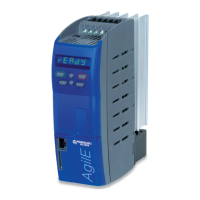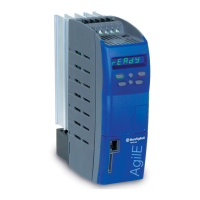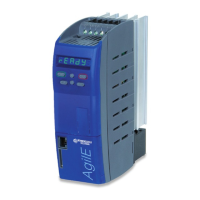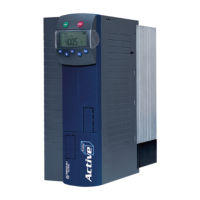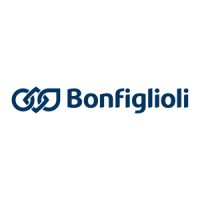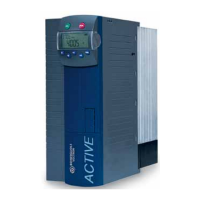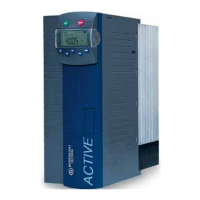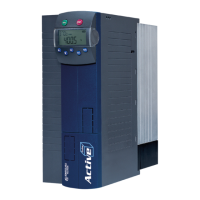Parameter descriptions
377 Stator resistance
0 mΩ 65535 mΩ
R
1190 Stator resistance
0.001 Ω 100.000 Ω 10.000 Ω
1)
In settings 110 and 410 of parameter Configuration 30.
2)
In setting 610 of parameter Configuration 30.
Stator resistance asynchronous motor:
For sensorless control according to V/f characteristic (setting 110 for Configuration 30): The stator
resistance of an asynchronous motor can be optimized while the machine is in no-load operation. At
the stationary operating point, the torque-forming current
Isq 216 and/or the estimated Active cur-
rent
214 should be zero. Due to the temperature-dependent of the stator resistance, the adjustment
should be done at a winding temperature which is also reached during normal operation.
A correct measurement will optimize the control functions.
For sensorless field-orientated control according to V/f characteristic (setting 410 for
Configuration
30): The stator resistance value determined during the guided commissioning procedure is suitable
for most applications and does not have to be optimized.
Stator resistance synchronous motor:
The stator resistance value of a synchronous motor is entered during commissioning. The stator re-
sistance is needed particular of operation at low speeds and should be available and entered as exact-
ly as possible for this reason. The
Stator resistance 1190 refers to the quantity between two motor
phases and can typically be taken from the data sheet of the motor.
The stator resistance value determined during the guided commissioning procedure is suitable for
most applications and does not have to be optimized.
378 Leakage Coefficient (asynchronous motor)
The leakage coefficient of the motor defines the ratio of the leakage inductivity to the main inductivi-
ty. The torque and flux-forming current components are thus coupled via the leakage coefficient. Op-
timization of the leakage coefficient within the field-orientated control systems demands acceleration
to various operating points of the drive. Unlike the torque-forming current
Isq 216, the flow-forming
current
Isd 215 should be largely independent of the load torque. The flow-forming current compo-
nent is inversely proportional to the leakage coefficient. If the leakage coefficient is increased, the
torque-forming current increases and the flux-forming component drops. The adjustment should re-
sult in a relatively constant actual current
Isd 215, matching the set Rated magnetizing current 716,
regardless of the load on the drive.
The sensor-less control system uses the parameter
Leakage Coefficient 378 in order to optimize the
synchronization to one drive.
No. Description Min. Max. Fact. sett.
716 Rated magnetising current (asynchronous motor, field-orientated control)
The
Rated magnetising current 716 is a measure for the current in the motor. The motor voltage will
build up accordingly in no-load operation (depending on speed). The guided commissioning deter-
mines this value at approx. 30% to 50% of the
Rated current 371. This current can be compared to
the field current of an externally excited direct current machine.
No. Description Min. Max. Fact. sett.
716 Rated magnetising current
0.01⋅I
FIN
o
c
⋅I
FIN
0.3⋅I
FIN
I
FIN
: Nominal value of frequency inverter
o
c
: Overload capacity of frequency inverter
115
Machine data 06/2013 Operating Instructions
Agile
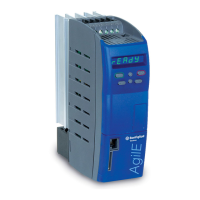
